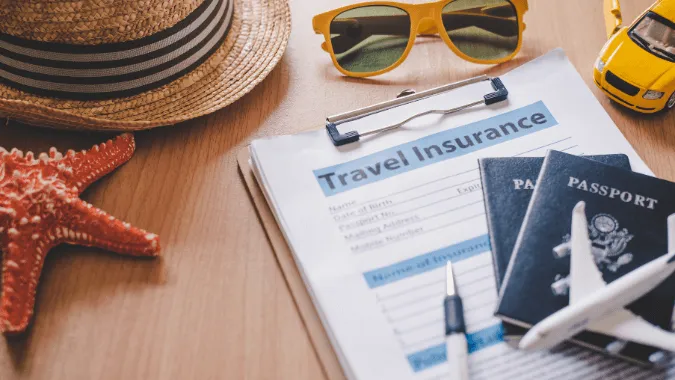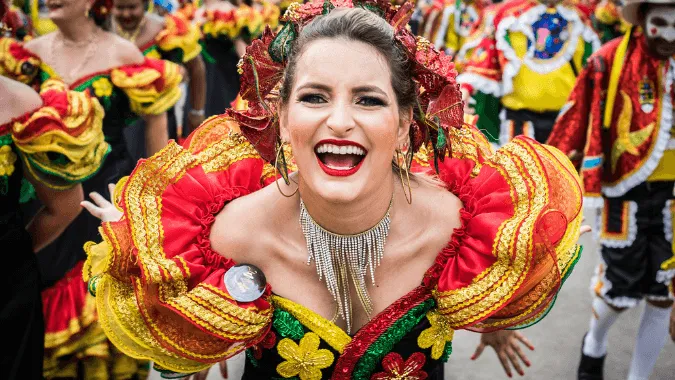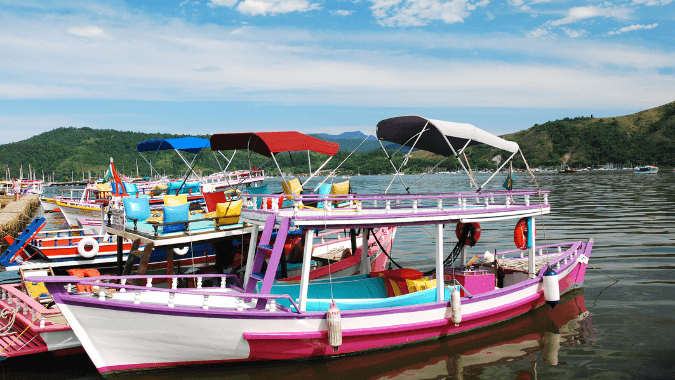Buenos Aires Neighbourhoods: A Guide to Recoleta
Distinguished by a wealth of cultural attractions and European styled architecture, Recoleta is the heart of Buenos Aires aristocracy. It is a neighbourhood where historical monuments sit alongside modern art galleries and private family mansions share the same real-estate as foreign embassies and fancy hotels. This guide offers an insight into what you can see and do in the most exclusive area of the city.
What to do in Recoleta
Take a walk down Junín
[caption id="attachment_8479" align="aligncenter" width="610"] The ethereal wonder of Recoleta Cemetery / Source[/caption]
The ethereal wonder of Recoleta Cemetery / Source[/caption] You should begin your visit to Recoleta by taking a leisurely stroll through the remarkable Recoleta Cemetery (Address: Junín 1790). Sitting on land that was once the garden of the adjoining church, this extraordinary display of mausoleums was first created in 1822 at the behest of President Bernardino Rivadavia. Each individual crypt and tombstone is an architectural wonder with many exhibiting the work of international sculptors. Former presidents, influential military figures, leading politicians, and other members of the city’s elite have final resting places here. Visitors will often first look for Argentine icon Evita Peron’s grave, where admirers leave flowers and other commemorative tributes, but be sure to explore the rest of this miniature city and take your camera – there are some amazing photographs to be taken.
Situated adjacent to the cemetery, your next sightseeing stop should be the Nuestra Señora del Pilar Basílica (Junín 1892); a stunning colonial church built by Jesuit architect Andrés Blanqui in 1732. Inside, the beautiful baroque altar with Peruvian motif is the focal point while down in the cloisters there is a small, yet intriguing, collection of religious artefacts.
A little further down the street, visitors can enjoy the cultural offerings of the Recoleta Cultural Centre (Junín 1930), one of the oldest buildings in Buenos Aires. This multidisciplinary space regularly plays host to photography exhibitions, music concerts, tango festivals, and the interactive Museum of Participative Science – a great place to visit if you are traveling with young children.
A Spectacle of Art and Architecture
[caption id="attachment_8481" align="aligncenter" width="610"] The spectacular MNBA houses the largest public collection in Latin America / Source[/caption]
The spectacular MNBA houses the largest public collection in Latin America / Source[/caption] A quick skip across Libertador Avenue and you are at the Museo Nacional de Bellas Artes (Av. del Libertador 1473), the very emblem of Argentina’s National Ministry of Culture. This extraordinary Fine Art venue can proudly boast that it has the largest public collection in Latin America, containing both a sumptuous assortment of nineteenth-century European masterpieces, and an exquisite selection of old and contemporary Argentine art. MNBA’s library of artwork is undoubtedly the most valuable of its kind in the world.
Walking through the Museum’s exhibitions rooms, visitors can gaze upon the magnificent post-impressionism of Vincent van Gogh, Paul Gauguin, and Paul Cézanne; the wondrous realism of Rembrandt; the elegant beauty of Rodin’s sculptures; and the fascinating paintings of Argentinian masters Pueyrredón, Sívori, Della Valle, and Ernesto de la Cárcova. You can visit the MNBA and more on our bespoke Museums of Buenos Aires tour.
Just beyond the Museum, in Plaza de las Naciones Unidas, stands Floralis Genérica, a striking metallic flower sculpture donated to the city by Argentine architect Eduardo Catalano. Constructed in 2002, the artwork was designed to move with time, closing its petals at sunset and opening again in the early morning.
To finish your sojourn into Recoleta, a visit to the National Library of Argentina (Agüero 2502) is a must. Founded by Mariano Moreno, the building was originally situated in Microcentro before being moved to its current location which was originally occupied by the Unzué Palace, the official residence of President Juan Domingo Peron. This concrete goliath is a symbol of Brutalist architecture. If you are an architecture enthusiast, why not take a tour of the city's most compelling buildings with our Buenos Aires Architecture Tour.
.Exclusive Shopping and Quiet Plazas
[caption id="attachment_8483" align="aligncenter" width="610"] Patio Bullrich shopping mall is home to a number of leading brand names / Source[/caption]
Patio Bullrich shopping mall is home to a number of leading brand names / Source[/caption] In the most prosperous neighbourhood in Buenos Aires, itself the most fashionable city in South America, you can expect the shopping options to be upscale, especially down the stylish Avenida Alvear where many of the world’s international brands have set up shop. If the outlets there don’t suit your taste, the multi-story Patio Bullrich (Posadas 1245) arcade is one block away, accommodating fine boutiques such as Lacoste, Tiffany & Co., Swarovski, Christian Lacroix, Hugo Boss, and Salvatore Ferragamo, along with a cinema complex and a food court. Less expensive shopping alternatives can be found in the Village Recoleta shopping mall that lines Vicente Lopez.
If you simply want to enjoy some downtime, Recoleta is home to a number of green spaces where you can relax and unwind while watching the Porteño’s go about their daily business. The graceful and tranquil Plaza Francia is the neighbourhood’s centerpiece. Every Saturday and Sunday the park is a popular hangout for bohemian types who come and organise a large handicraft market that draws visitors from all over the city.
Nightlife Options Aplenty
[caption id="attachment_8491" align="aligncenter" width="610"]![By English: Taken by the uploader, w:es:Usuario:Barcex Español: Tomada por w:es:Usuario:Barcex [GFDL (http://www.gnu.org/copyleft/fdl.html) or CC BY-SA 3.0 (http://creativecommons.org/licenses/by-sa/3.0)], via Wikimedia Commons Alvear Palace Hotel by day](https://travel-guide.daytours4u.com/wp-content/uploads/sites/2/2015/10/640px-Buenos_Aires_-_Avenida_Alvear_-_20090104-r.jpg) The exclusive Alvear Palace Hotel is home to the exquisite La Bourgogne restaurant / Source[/caption]
The exclusive Alvear Palace Hotel is home to the exquisite La Bourgogne restaurant / Source[/caption] This most exclusive of neighbourhoods has a wonderful array of dining options and you are sure to find something that meets your needs.
In the lavish Alvear Palace Hotel, renowned chef Jean Paul Bondoux has opened La Bourgogne (Ayacucho 2027), a refined and luxurious restaurant specialising in French cuisine. The foie gras scallop and ravioli d’escargot are particularly exquisite.
For traditional Argentine dishes with a twist, head over to Tarquino (Rodriguez Peña 1967) where chef Dante Liporace – a leader in the Nueva Cocina Argentina movement – has given a gastronomic makeover to the local classics. His playful and innovative seven course tasting menus pay homage to Argentina’s most beloved plates.
If you who have a penchant for seafood, the Spanish inspired Oviedo (Beruti 2602) is a great option. The spectacular fish based menu and the authentic setting combine perfectly to make this one of the most charming dining experiences in town.
Despite being famed for its meat, Argentina is also very proud of its pizza. El Cuartito (Talcahuano 937) is the best place in the city to sample this Argentinian delight. Dating back to 1934, this establishment is lively and great for a quick on the go meal.
For those of you looking to continue your night at a bar or nightclub, Recoleta caters for that too. Particular highlights include Casa Bar (Rodriguez Peña 1150), Shamrock (Rodriguez Peña 1220), Milion (Parana 1048), and Club Shampoo (Avenida Pres. Manual Quintana 362).
With a rich history, stunning cultural attractions, verdant plazas, plentiful dining options, and a dizzying nightlife, Recoleta has it all.
To enjoy the beautiful Recoleta neighbourhood on a walking tour or a bike tour, book here with bsas4u.
By: Simon Hall
-
Exciting 4x4 route: São Luís and FortalezafromUS$1,014
-
Vila Gale Mares Resort All InclusivefromUS$100
-
Ecotourism in Chapada DiamantinafromUS$672
-
All inclusive Vila Gelé Cumbuco ResortfromUS$999
-
Full Day Cafayate Tour from SaltafromUS$68
-
Transfer Aeroparque - Buenos AiresfromUS$46
-
-
Transfer Ezeiza - AeroparquefromUS$91
-
-
Excursion to El Chaltén from El CalafatefromUS$153
-
-
-
-
-
-
-
-
-
-
-



